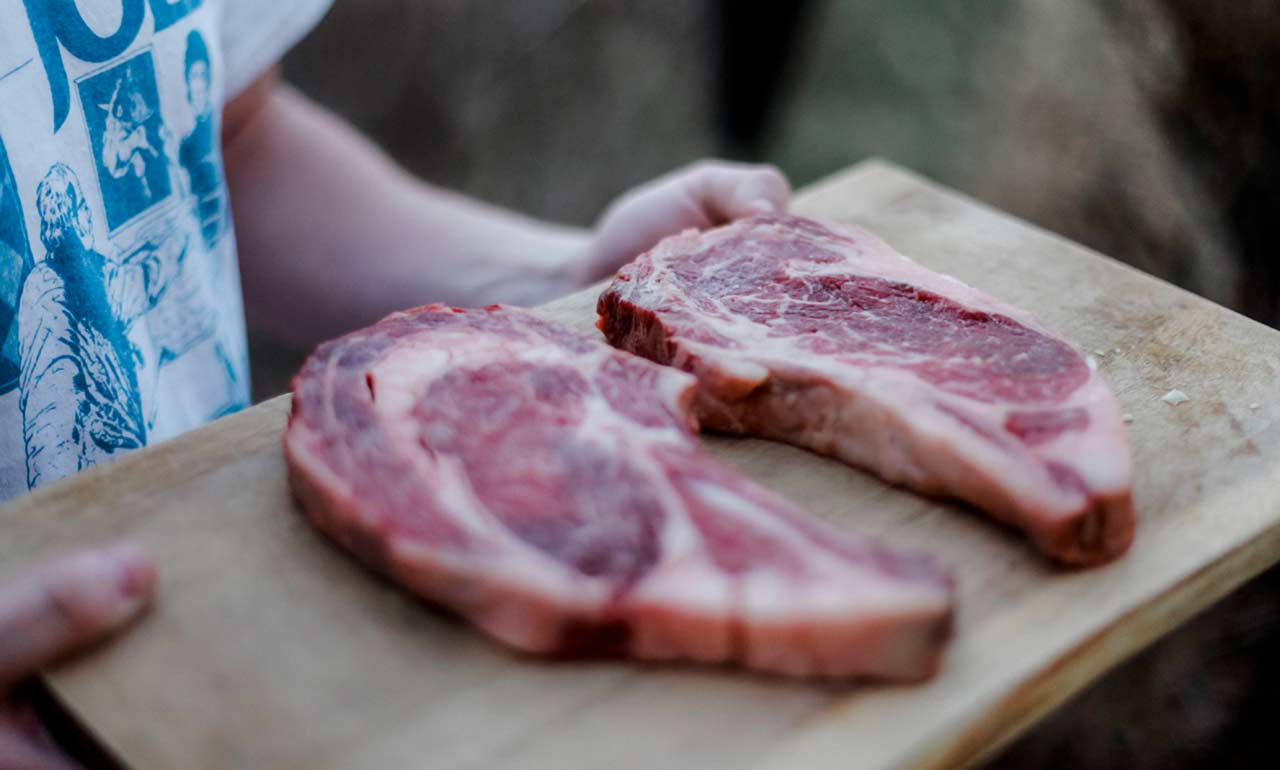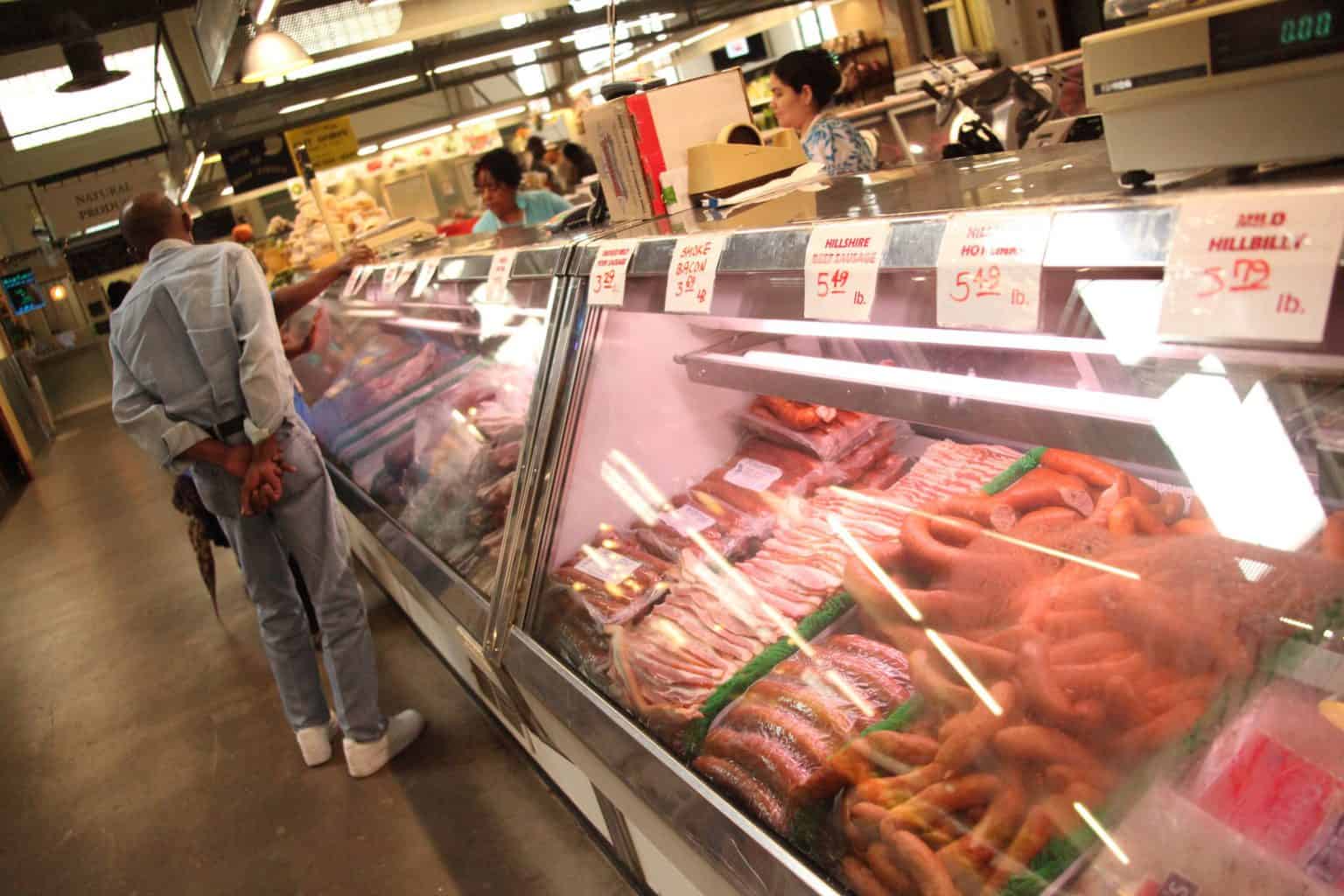Your Comprehensive Source for Expert Tips on Navigating the Meat Market Scene and Making Enlightened Acquisitions
Browsing the world of meat investing in can typically seem like a complex labyrinth, with numerous cuts, qualities, and tags adding layers of ins and out to the decision-making procedure. For those looking for to make enlightened selections and raise their cooking experiences, understanding the subtleties of the meat market scene is critical. From decoding the difference between prime and option cuts to unwinding the enigmas behind various qualifications, a wealth of professional pointers waits for those happy to decipher the tricks of the butcher's domain. By grasping the art of picking fresh, quality meat and learning to involve efficiently with butchers, people can not only boost the flavors on their plate yet additionally make positive decisions that line up with their values and choices.
Comprehending Different Cuts and Qualities
When it pertains to acquiring meat, comprehending the distinctions in between various cuts and grades is essential for making educated choices at the marketplace. The cut of meat refers to the details muscle mass team where the meat is sourced, while the grade is a high quality designation based on variables like marbling, inflammation, and maturity of the animal. Prime quality meats have the highest degree of marbling, making them tender, juicy, and tasty, yet they additionally tend to be a lot more costly. Selection quality meats are slightly leaner with much less marbling but still provide great quality for a lower cost factor. Select grade meats have the least marbling, making them leaner however potentially less tender. It is very important to consider the food preparation method when picking a cut and quality of meat-- for instance, well-marbled cuts like ribeye are wonderful for barbecuing, while leaner cuts like sirloin may be better matched for roasting or braising. By understanding the differences in between cuts and grades, customers can make more enlightened choices when buying meat.
Choosing Fresh and Quality Meat
To ensure optimum taste and security in your meals, it is vital to thoroughly choose fresh and high quality meat when purchasing at the marketplace. When choosing fresh meat, seek cuts that have a vivid color, company appearance, and are not slimy but moist. The color of the meat should specify to the kind you are acquiring; for example, beef should have a bright red hue, while pork ought to be much more pinkish. Avoid meat with any kind of off-smells, staining, or extreme liquid in the product packaging, as these can be indications of perishing.
Along with appearance, think about the resource of the meat. Choose products from credible providers known for their high-grade criteria. Organic, grass-fed, or pasture-raised alternatives might likewise suggest better high quality meat. Looking for suitable labeling, such as USDA qualities or certifications, can even more guarantee you of the meat's top quality and safety. By being alert in your choice process, you can appreciate scrumptious and safe dishes made from fresh, top notch meat.
Decoding Labels and Certifications
Recognizing the labels and qualifications on meat products is essential for making notified choices about the high quality and origin of the meat you purchase. When browsing the meat market scene, it is essential to search for tags such as "USDA Qualified Organic," which suggests that the meat was created adhering to strict organic requirements without the usage of artificial chemicals, antibiotics, or hormonal agents. Another crucial tag to look for is "Grass-Fed," which suggests the animals were fed a diet plan primarily consisting of yard or forage. This tag commonly shows a leaner item with higher degrees of omega-3 fats.


Qualifications like "Animal Well-being Approved" or "Licensed Humane" indicate that the pets were increased in gentle conditions, with accessibility to outdoor areas and honest therapy. On the other hand, "Non-GMO Task Verified" suggests that the meat comes from animals that were not fed genetically customized organisms. By understanding these labels and accreditations, consumers can make even more moral and sustainable choices when acquiring meat products.
Involving With Butchers for Support
Making educated choices concerning the meat you buy can be even more boosted by looking for guidance from knowledgeable butchers who have beneficial understanding about different cuts, high quality, and sourcing techniques. Butchers are skilled professionals that can provide understandings right into the finest cuts of meat for particular recipes, recommend alternative choices based upon accessibility or budget plan, and offer suggestions on appropriate handling and storage to make the most of freshness and taste.
Involving with butchers permits customers to ask concerns concerning the resource of the meat, including whether it is locally sourced, organic, grass-fed, or sustainably elevated. By cultivating a relationship with a relied on butcher, consumers can get a deeper understanding of the meat they acquire, making sure that it straightens with their preferences and values.
Moreover, butchers can share cooking tips, dish ideas, and also butcher unique cuts to meet individual choices. Their know-how prolongs beyond just marketing meat; they can assist in dish planning, portion sizing, and supply recommendations on complementary ingredients to create well-shaped and scrumptious dishes - Bagley Farms Meat Market. By leveraging the understanding and experience of butchers, consumers can make more informed decisions when navigating the meat market scene

Optimizing Value and Budgeting
When thinking about making best use of worth and budgeting in the meat market, it is essential to evaluate the cost per serving and discover affordable cuts that still use excellent taste and high quality. By recognizing resource the expense per serving, customers can make enlightened choices concerning which cuts of meat offer the ideal value for their budget.
An additional method for budget-conscious customers is to capitalize on sales, discounts, or mass purchasing choices. Acquiring in bulk and freezing parts for later use can help in reducing overall prices per offering. It is additionally valuable to develop a partnership with local butchers or meat vendors, as they might offer unique bargains or discount rates to loyal clients. By bearing in mind expense, exploring alternate cuts, and leveraging discount rates, customers can extend their meat budget without giving up quality.
Conclusion
In verdict, comprehending the various cuts and grades of meat, choosing fresh and high quality products, deciphering tags and qualifications, looking for advice from butchers, and taking full advantage of value and budgeting are vital actions for navigating the meat market scene and making informed purchases. Bagley Farms Meat Market. By adhering to these professional ideas, consumers can make knowledgeable choices when purchasing meat and description guarantee they are obtaining the best value for their cash
When it comes to acquiring meat, recognizing the differences in between numerous cuts and grades is necessary for making notified choices at the market. The cut of meat refers to the particular muscular tissue group from which the meat is sourced, while the grade is a top quality designation based on factors like marbling, tenderness, and maturation of the animal. It's essential to take into consideration the food preparation method when picking a cut and grade of meat-- for example, well-marbled cuts like ribeye are fantastic for barbecuing, while leaner cuts like sirloin may be better matched for toasting or braising.Understanding look at this now the tags and certifications on meat products is crucial for making informed choices about the quality and origin of the meat you buy. When navigating the meat market scene, it's crucial to look for tags such as "USDA Licensed Organic," which suggests that the meat was created complying with stringent organic standards without the usage of artificial pesticides, antibiotics, or hormonal agents.